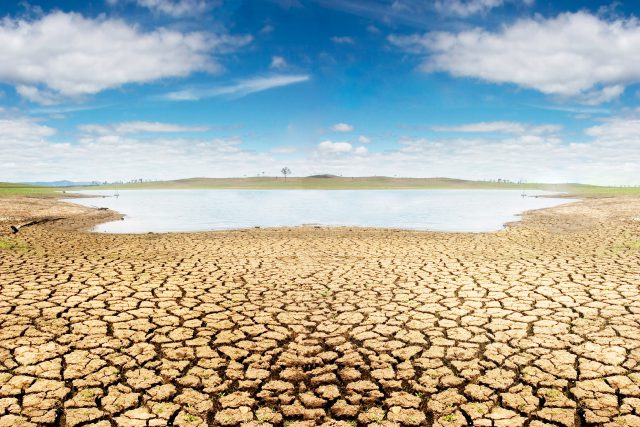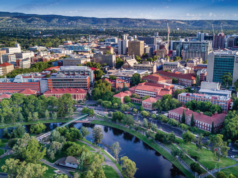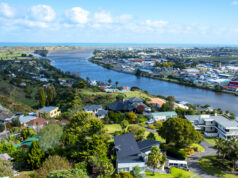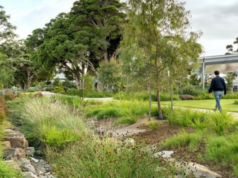Much of Australia has suffered from a lack of water for decades, not least during the Millennium drought. We ask consultant Rachel Barratt how water supply management is changing in light of that event.
The Millennium drought, so-called because it began in the early 2000s, lasted nearly a decade and placed extreme stress on huge areas of agricultural production across the south of the country.
Since then, drought solutions in Australia have been largely informed by the responses to this severe weather event. Rachel Barratt, Associate Director at Aither, spoke directly to this notion when she delivered a presentation titled ‘The Future of Water Secure Cities: Lessons Learnt from the Millennium Drought’ to Ozwater’20, AWA’s landmark online conference held in June.
As the lead on strategy and performance for a consultancy firm that provides advisory services in economics, strategy and policy, Barratt spends much of her time analysing data on water shortage. “My background in water sector means a lot of my work is in water policy, management and strategy,” she says. Here she answers questions about the realities of wide-scale drought and how towns and cities are responding to water security issues.
What was the scope of the Millennium drought?
The Millennium drought occurred from around 2001-2009. It’s considered Australia’s worst drought on record. It affected most of southern Australia, including cities such as Melbourne, Sydney and Adelaide, and much of our agricultural regions, particularly within the Murray-Darling Basin.
The year 2006 was the driest on record for many parts of the country and conditions remained hot and dry through to early 2010. The emergence of La Niña weather conditions in 2010 rapidly ended the drought and led to floods in some locations.
What were the effects of the drought?
The drought placed extreme pressure on agricultural production and urban water supply in much of southern Australia.
In South Australia the impact was severe. A combination of low rainfall and the lowest inflows into the river in recorded history meant flows over the border into South Australia virtually ceased, with unprecedented impacts. Adelaide’s water supply was threatened, and pipelines had to be built to deliver drinking water to the Lower Lakes communities and sustain valuable horticultural industries. Supplies to the nearly 4,000 South Australian irrigators that get their water from the River Murray were severely restricted, putting pressure on agricultural and horticultural industries and regional communities. Thirty-three wetlands were temporarily disconnected to help save water, risking long-term damage to the ecosystem. The Lower Lakes began to dry up, exposing acidic soils, and the Murray Mouth closed, forcing around-the-clock dredging to ensure salt and other pollutants could be flushed out of the river system. Parts of the Coorong became too salty for many native plants and animals to survive, becoming five times saltier than the sea.
What water security measures were introduced as a result of the Millennium drought?
Governments across Australia responded quickly and decisively to the Millennium drought, including the construction of six major seawater desalination plants to provide water to Australia’s major cities, and increased support and momentum in the management of water in the Murray–Darling basin, which resulted in the Water Act and Basin Plan.
Many states developed their first ‘water security plans’. In SA this was Water for Good. These plans included a range of actions that diversified supplies and ensured future water security.
In many respects this drought focused attention and enabled a lot of infrastructure and reform initiatives to be put in place that would not have otherwise occurred. The infrastructure and planning that was put in place has done Australia well until now. In terms of lessons it tells us that often reform must be opportunistic when there is public and political support for it to occur and a clear and undeniable problem. As policy-makers, we need to see these opportunities and often be ready with clear ideas, as the window of opportunity closes quickly.
What impact is the changing climate having on water supply management in Australia?
Most water managers are well aware of both drought and climate change. The Millennium drought definitely brought this into focus as it tested all of our existing knowledge of how drought should play out.
There are climate independent solutions for water supply (such as desalination and recycled water) so we can manage this. But these water sources are more costly than our traditional sources.
As a result, water planning now considers a wider range of scenarios and takes into account climate change, based on known data. The challenge arising from climate change is uncertainty and increased variability. To manage this, we need to decide on what level of risk is acceptable, as it costs more to provide solutions that are ‘secure’, such as to build another desalination plant. The challenge arising from this is what does the community want to accept in terms of water security? And consequently, how much are they willing to pay?
How are Australian towns and cities responding to the issue of water security?
Generally, I can say that most water utilities and policy-makers are considering how to ensure secure supplies, and are diversifying sources and managing demand as much as possible. In Adelaide we have a very secure water supply that is made up of a range of sources. We are doing well today, but we need to start a conversation about what is the next augmentation. As our cities continue to grow, we will need to plan for more water to meet these growing needs and this long-term planning needs to start now.
What effective strategies can be put in place to manage water more sustainably for our towns and cities?
Post the Millennium drought there was a significant amount of reform and infrastructure put in place that made a tangible difference to our water security. However, the world has changed significantly since 2009.
We have better appreciation of climate change and its impacts, new technologies, changes in community expectations and more robust consideration of costs and benefits of our decisions. We now need to have the conversation again about the future of our cities from a water perspective, and what our communities want and are willing to pay for.
This next round of reform will set us up for the next decade and beyond.














